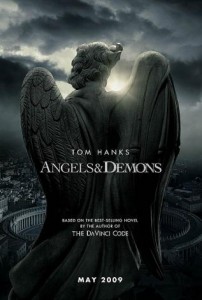 For one who knows anything about the stuff in Dan Brown’s novels, the temptation is do, of course, what many have already done: assemble a book-length catalog of all the hideous inaccuracies and abominable oversimplifications and gross assaults on whatever faith one happens to hold. When restricted to an article, perhaps it’s better to choose a particular, over-arching theme to harp on, which might at least instill a degree of suspicion among readers as they inevitably flock to ingest Brown’s next theologo-thriller (it, by the way, will be on the Masons). Whether in the form of a book or article, however, one thing can be certain: nowhere near as many people will read it as read Brown himself. Worse, by grafting onto the hype around his all-time bestsellers, one runs the risk of being better-known for this dutiful refutation than for any more brilliant or original concoction. One way or another, Dan Brown wins.
For one who knows anything about the stuff in Dan Brown’s novels, the temptation is do, of course, what many have already done: assemble a book-length catalog of all the hideous inaccuracies and abominable oversimplifications and gross assaults on whatever faith one happens to hold. When restricted to an article, perhaps it’s better to choose a particular, over-arching theme to harp on, which might at least instill a degree of suspicion among readers as they inevitably flock to ingest Brown’s next theologo-thriller (it, by the way, will be on the Masons). Whether in the form of a book or article, however, one thing can be certain: nowhere near as many people will read it as read Brown himself. Worse, by grafting onto the hype around his all-time bestsellers, one runs the risk of being better-known for this dutiful refutation than for any more brilliant or original concoction. One way or another, Dan Brown wins.
So why did I bother writing this piece in today’s Religion Dispatches? Well, how else could I get paid to sit on my couch all day reading pulp fiction and then, in the evening, rush off to Manhattan with a friend who’s the closest thing I could find to being a “symbologist” (he studies Freemasonry) to see the latest blockbuster? And I was lucky—it ended up touching on a lot of my recent work on multiverse physics and evolution and the Templeton Foundation.
Ewan McGregor portrays, to my knowledge, the first action-movie villain driven to his diabolical acts by an addiction to intelligent design theory.
Comments
2 responses to “Religion and Science, Sitting in a Tree … in Vatican City … with a Mysterious Pentagram Carved into It”
I wonder why we can’t simply enjoy the fiction that is Dan Brown’s work. And they ARE entertaining, well-written tales. I write this while I wonder why Langdon couldn’t just have been a semiotics professor, a discipline that exists and is not dissimilar to ‘symbology’. Or maybe a cryptographer (I was going to say codicologist but that’s a different thing, although even that might work). It clearly bothers me!
Your article is interesting and hits upon the key significance of Angels & Demons plot in its contextual reality. Religion and science play such a huge role in our lives especially in America where the debate between the two is so incredibly public. I don’t think, however, that most people who go see the movie or read the book connect the dots in this way. It is, in the end, a plot with the usual good vs. bad dichotomy after all.
[On an unrelated note: When people hear I study history in art, they always ask if I’ve read The Da Vinci Code which infuriates me especially since my speciality is Islamic art and architecture…]
I’m amazed that you, as a scholar of art, would think that any work of art is so innocent as to be “just” art! Ideas permeate all our creations, which go on to create each other’s worlds. It would be an insult to the very project of studying art and literature to claim that entertainment can be so innocent. But, in any case, it’s clear that Dan Brown is himself interested in affecting the way people think about religion. Ross Douthat at the Times writes:
I’ve heard people suggest semiotics as something like symbology. But, so far as I know, semioticists read books by French theoretical anthropologists, they don’t run around interpreting ancient symbols.